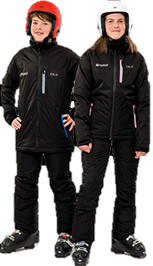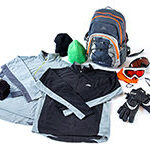 Equipment
Equipment
All ski gear, including skis, boots, helmets, and poles, will be provided by our trusted ski partner.
Rent Clothing
Mr Jack is currently in communication with Interski who offer a rental service for ski clothing. I am hoping that this will help to reduce the overall cost of the trip for families. For more information on this please visit the Interski website or contact Mr Jack via the contact page.
Borrowing Clothes
To keep costs down it is always a good idea to ask friends and family if they have any specialised ski clothing that you can borrow. The school do have access to some DofE clothing that could also work with skiing, but not enough to accommodate everyone on the trip. If this is something you are interested in please speak with Mr Jack.
Buying Clothing & Accessories
If you prefer to purchase your clothing, Aldi, Lidl, Mountain Warehouse, TK Maxx, Trespass, Go Outdoors, and Decathlon offer reasonably priced options. Aldi’s ski clothing will be available for pre-order online on November 11th and in stores on the 17th.
Interski also offer a ski accessory package that may be of interest to families. This package includes all the accessories a pupil will need on the trip and costs £100.
Included in the pack is:
 x 1 Trespass Rucksack
x 1 Trespass Rucksack- x 1 Trespass Performance Gloves
- x 1 Trespass Micro Fleece
- x 1 Trespass Beanie
- x 3 Interski Ski Socks
- x 1 Dirty Dog ski goggles
- x 1 Interski Sunglasses
- x 1 Aloe Up Sun Cream and Lip Salve
For more information on this accessory pack please visit the Interski website.
Cheap Shops For Ski Clothing & Accessories
Clothing & Accessory Guide
Helmet
- Requirement: Must be worn at all times while skiing.
- Provided By: Tour operator will supply helmets.
- Note: Helmets are essential for safety on the slopes.
Warm Hat
- Purpose: Worn during lunch breaks and while travelling.
- Tip: Choose a snug, insulating hat to help retain heat when the helmet isn’t in use.
Goggles
- Preference: Goggles need to be worn while skiing. They protect against the wind, cold and snow blindness
- Requirement: Must be worn while skiing to protect eyes from bright sunlight and potential snow blindness.
- Care: Use a soft case or cloth to keep lenses clean and scratch-free.
Buff/Scarf (Optional)
- Use: A buff or scarf is useful to cover the neck, chin, and mouth, helping to shield against wind chill.
- Tip: Lightweight, breathable options are best so they can be easily adjusted for comfort.
Base Layer (Top)
- Material: Choose a breathable, quick-drying, and sporty fabric. Avoid cotton, which absorbs moisture and can lead to feeling cold.
- Purpose: Keeps body heat close to the skin while wicking moisture away.
Base Layer Bottoms (Optional)
- Use: Optional thermal layer for extra warmth under ski trousers.
- Tip: Particularly useful if the weather is expected to be very cold.
Technical Fleece (Optional)
- Material: Choose a lightweight, quick-drying fleece to wear over the base layer.
- Use: Adds an extra layer of warmth on colder days without adding bulk.
Ski Jacket
- Features: Look for a warm, waterproof jacket with useful pockets for carrying essentials like a lift pass, gloves, and small snacks.
- Tip: Make sure it fits comfortably over all layers.
Ski Trousers/Salopettes
- Features: Waterproof, insulated trousers designed to fit comfortably over ski boots.
- Tip: Ensure they’re adjustable at the waist and are long enough to fully cover the tops of the boots for maximum warmth and protection from snow. Can be worn with a sport belt.
Gloves
- Requirement: Thick, waterproof gloves must be worn while and dry.
- Feature: Look for gloves with a wrist leash to prevent losing them. A spare pair is optional but can be helpful.
Ski Socks
- Material: Thick, cushioned socks designed specifically for skiing.
- Fit: High socks that reach above the ski boot to avoid rubbing or chafing.
- Tip: Avoid wearing multiple pairs of socks, as this can cause discomfort and impact boot fit. Do not wear generic large socks like “football socks”, these can absorb moisture and become very uncomfortable. They may also move around in the boot.
For further details and recommendations, you can explore additional resources here.
By following this guide, you can ensure that your child is well-prepared, warm, and comfortable throughout the trip. Remember, layering is key, and breathable, waterproof fabrics are the best for staying dry and maintaining body heat.

